In Sam Handel’s charmingly yearning, comedic short film, The River, a very pregnant Lauren Ambrose portrays a co-op employee in a rural town in the Berkshires desperately seeking relief from the heat. But at every turn her efforts are hindered. Her boss won’t let her take the afternoon off; she’s segued by a teen scrounging for booze outside the local liquor store (where a pre-Star Wars Adam Driver makes an appearance); and, finally… her car runs out of gas. Taking place in Western Mass, the short is a testament to the state of being in between. In a scene that exudes deliverance, The River ends with a backlit Ambrose dipping into cool and welcoming waters, a return to the ultimate maternal source.
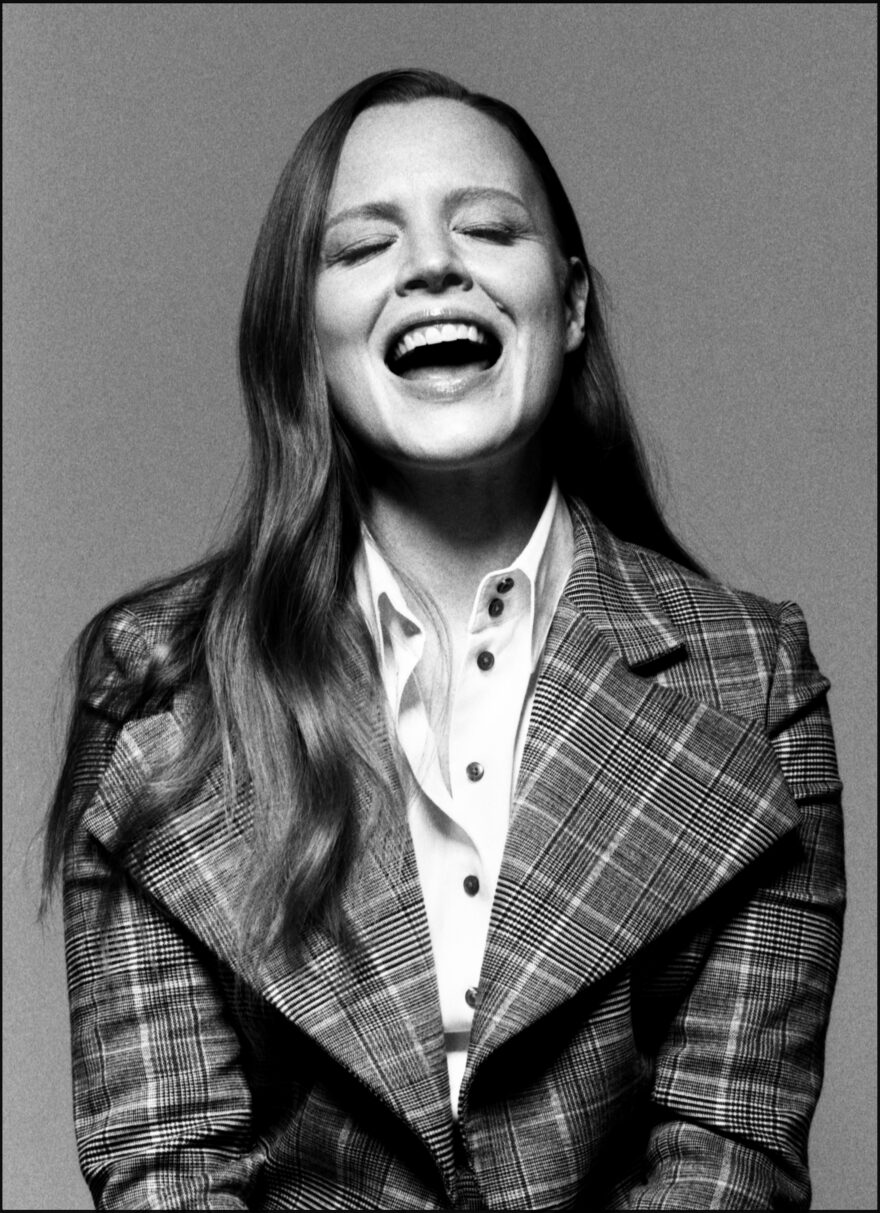
Lauren Ambrose doesn’t like to expound too deeply on past roles. Since her long-standing part on Six Feet Under — a series about a dysfunctional family that runs a funeral home — she has proven herself to be an actor’s actor whether she’s on stage or in front of the camera. She has very little interest in the hype or celebrity that tends to go together with a career in entertainment. She doesn’t live in Hollywood or New York, and that’s by design. She lives in the woods. “In the middle of nowhere.” Precisely where she wants to be.
“When people want me to assign importance to something that I’m in, I’m like, ‘I’m out. I can’t, not my function. I just make it,’” she tells me. “You guys can decide if it’s useful.” For Ambrose, inhabiting a new character is the high art of not thinking too deeply about it — at least not in the moment. “You do all that research, and you read stuff, and you have ideas from the outside world. And then you put it all in the pot, and the only thing that matters is being present.” And there is no faking presence. “I have all kinds of voodoo witchcraft rituals that I do to bring forth the most personal parts of myself.”
When asked if she can expand on that, Ambrose is quick to reply, “No. They would lose their power.”
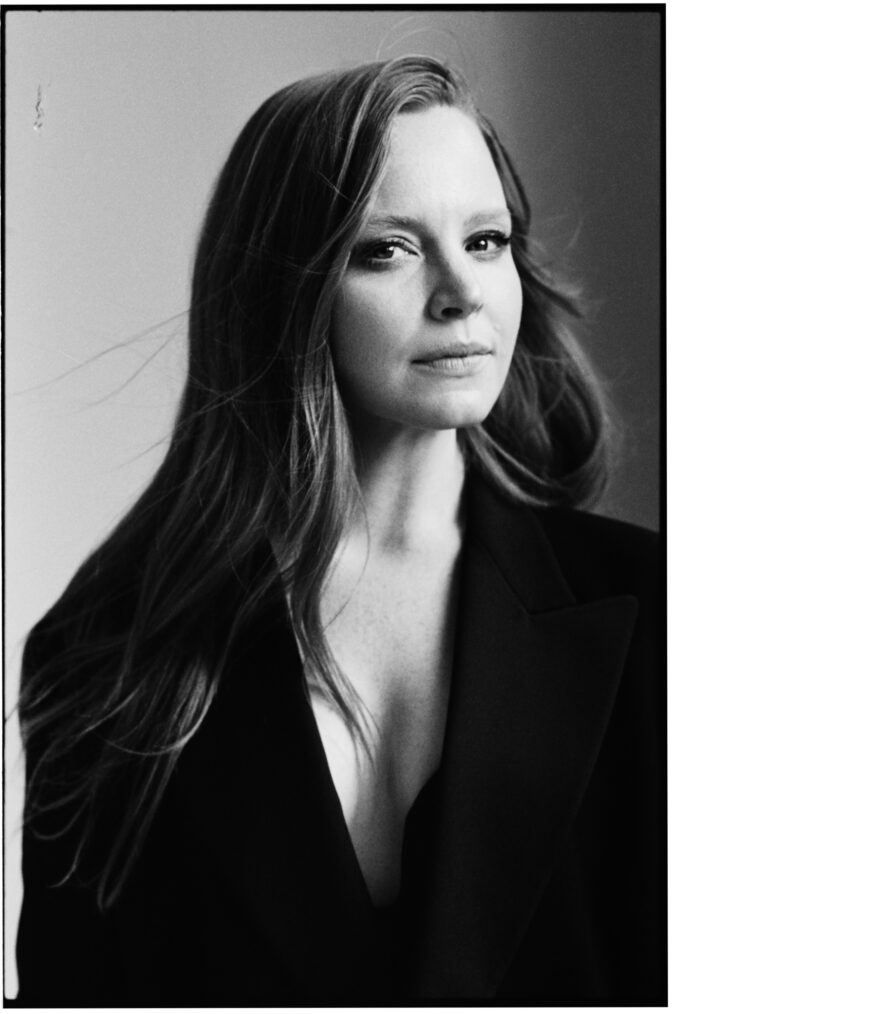
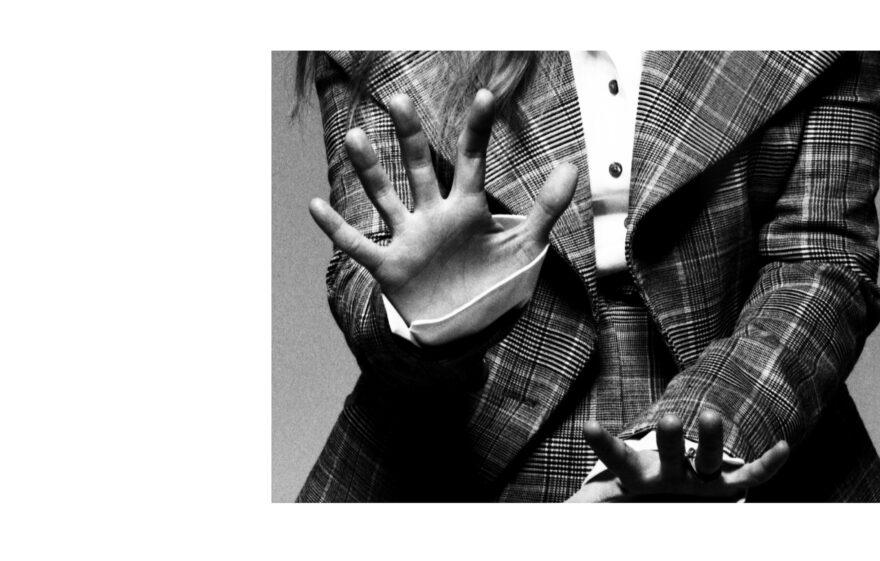
It is precisely this conception of acting and performance (and, yes, even the dark magic therein) which lies at the center of Ambrose’s newest project, Servant, produced and directed by M. Night Shyamalan in partnership with Daniel Sackheim. Taking place in a wealthy Philadelphia neighborhood, Servant is a testament to barely-holding-it-together. Here, emotional trauma scars both the mind and body, ultimately materializing in all sorts of strange and even supernatural ways. Splinters mysteriously emerge from the skin. Strangers lurk in the periphery. The characters are haunted: Some by harrowing visions of animal parts, and others by the unsettling, false flesh of silicone. In his book Psychology and Religion, Analytical Psychologist C.G. Jung wrote what could effectively be the thesis statement for this project, “Everyone carries a shadow, and the less it is embodied in the individual’s conscious life, the blacker and denser it is.”
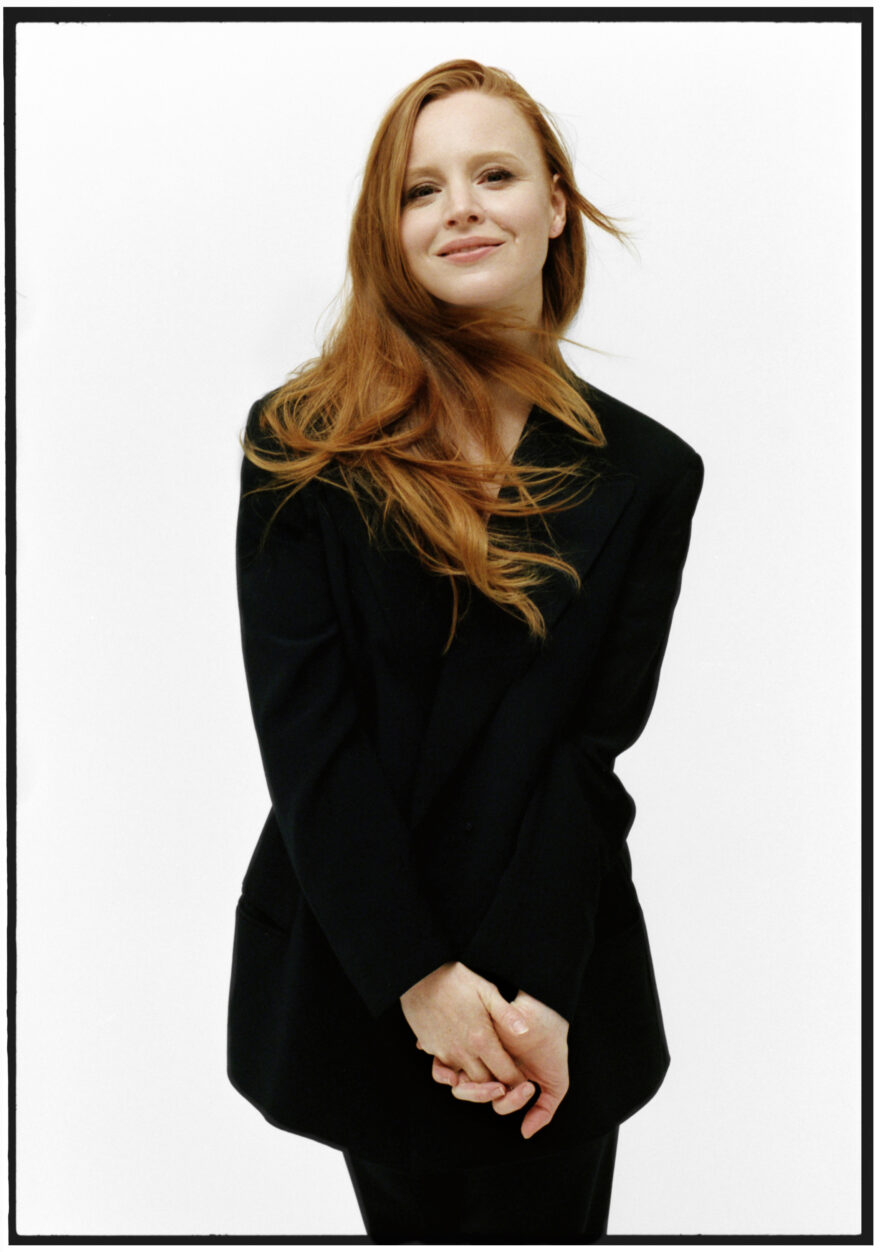
Just as Six Feet Under opens with the death of the family patriarch, leaving the main characters scrambling to define a new normal, Servant opens in the aftermath of a brutal loss, which rewrites our protagonists’ sense of self. As the female lead, a bereaved newscaster named Dorothy, Ambrose plays the part of a would-be single mother grappling with the death of her infant child (forebodingly named “Jericho,” after the destroyed Biblical city) with stunning acuity. “One of the big ideas of this show is how we all deny deaths, and deny grief in our lives because it’s hard to look at the human experience. And that’s also, to me, what’s exciting about the piece,” says Ambrose.
Throughout Servant, artifice, of all kinds, comes to the forefront. In an ill-advised attempt to help Ambrose’s character cope with her insurmountable feelings of loss, the men in her life give her a silicone doll to transfer her attention on. This prop, and its unsettling realness, was of particular interest for Ambrose. “I love the prop. I mean, it’s creepy when they open the box because it’s this little humanoid out of a black case with interchangeable heads. But one woman made this doll, cast it, and painted everything. She created every little modeled skin spot, and laid every eyelash, and painted every fingernail. It’s very life-like, which is very helpful for me, for Dorothy,” she says.
“DW Winnicott talks about dolls as transitional objects. I watch my young daughter play with dolls, and it’s more than a toy. Children need dolls because they need a transitional object, and that’s kind of where Dorothy is….
She’s obsessed with veneer and obsessed with perfection; she’s a perfectionist. She’s an ambitious person, and she’s not used to anything in her life going wrong. So, when she has the ultimate thing go wrong, or what in her mind would be the ultimate failure, she can’t even bear to look at it.”
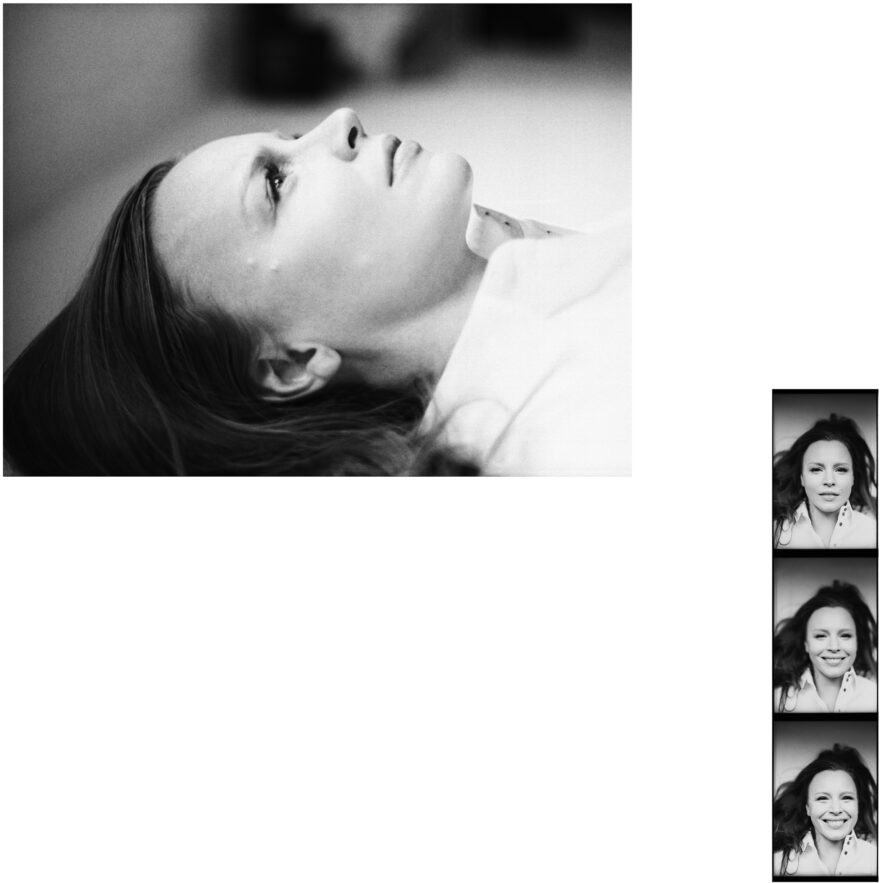
Coming right off her Broadway run as Eliza Doolittle in My Fair Lady, a performance that Jesse Green of The New York Times called “feral and then luminous,” Ambrose is quick to note the similarities between the two projects. After all, Servant’s structure borders on Aristotelian tragedy. “The set is like the fifth character in the piece,” says Ambrose. “We almost never leave. The four characters are trapped in this house.” Taking the theatrical comparisons even further: “We shot it in order. We shot it maniacally in order, which is unheard of. It was often like shooting a play.”
The cumulative effect of these choices is at once claustrophobic and emotive. While a series of strange, supernatural happenings crackle in the background, Ambrose and her on-screen husband, played by Toby Kebbell, maniacally endeavor to erase their privilege, as well as their trauma, and, in doing so, all the better cling to both. Economic divisions haunt the piece in a way that feels stunningly current. Dorothy’s nanny, the “servant,” is devoutly religious and, in many ways, distinctly working-class (characterized by crosses, daily prayers, conservative dress, and a disconcerting amount of Campbell’s Tomato Soup). This stands in stark contrast to her bosses’ more urbane sensibilities (endless glasses of wine served with carefully crafted meals featuring exotic ingredients like eel). “Perception versus reality is a big theme of the show on many levels,” Ambrose tells me. “They’re all trying to hold together this fantasy to the point where it becomes their reality.” But, as in Jung’s conception of the shadow self, the more you work to repress undesirable traits, the more they come to the surface and ultimately subsume you. Servant luxuriates in these moments of liminal abjection and barely-contained horror. It’s very comfortable with its “what the hell IS that” moments. Yet, between fleshy food sequences (that will either make you drool or squirm), Dorothy’s character radiates on the screen as she desperately attempts to normalize an increasingly discomfiting and surreal situation.

Ambrose uses the refrain “I don’t know” like a punctuation mark and applies that same sense of ambiguity and mystery to all of her performances. In both The River and Servant, she channels the gravity and physicality of motherhood in a way that feels true and complex and, yes, sometimes even uncomfortable. Her performances are pregnant, not in the sense of literal pregnancy, but in the sense that they are full and layered and strangely complete. But pregnancy means many things to many people. For some, it evokes the primordial miracles of nature. For others, it is a symbol of abject and uncomfortable body horror akin to Ridley Scott’s Alien. A pause can be pregnant, containing a meaning that has yet to be expressed. In the same way, we can view the acting process — Ambrose’s explicitly feminized “witchcraft” — as a similar act of creation that builds to a living and breathing external expression, whether its Eliza Doolittle or a wealthy woman on the verge of a nervous breakdown. Straddling the divisions between restraint and unbridled emotionality, physicality and intellectualism, “witchcraft” and technique, Lauren Ambrose’s liminal performances invoke other places, other people, other times, and other minds. They are convincing precisely because they are uncertain, engaging in a process that transgresses the borderlands of personality to mine our most complicated, confusing, and core impulses. And the performances are all-the-more-true for it.
TEAM CREDITS | LAUREN AMBROSE GOES TO THE SOURCE
Photographed by Stefani Pappas
Written by Charlotte Anderson
Produced by Elizabeth Andrien
Styling by Mimi Kim
Hair by Marco Santini
Makeup by Rebecca Restrepo
Photographers Assistant, Daisy Kim